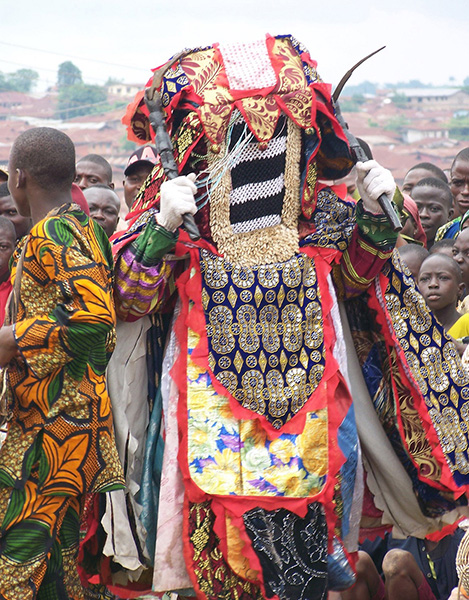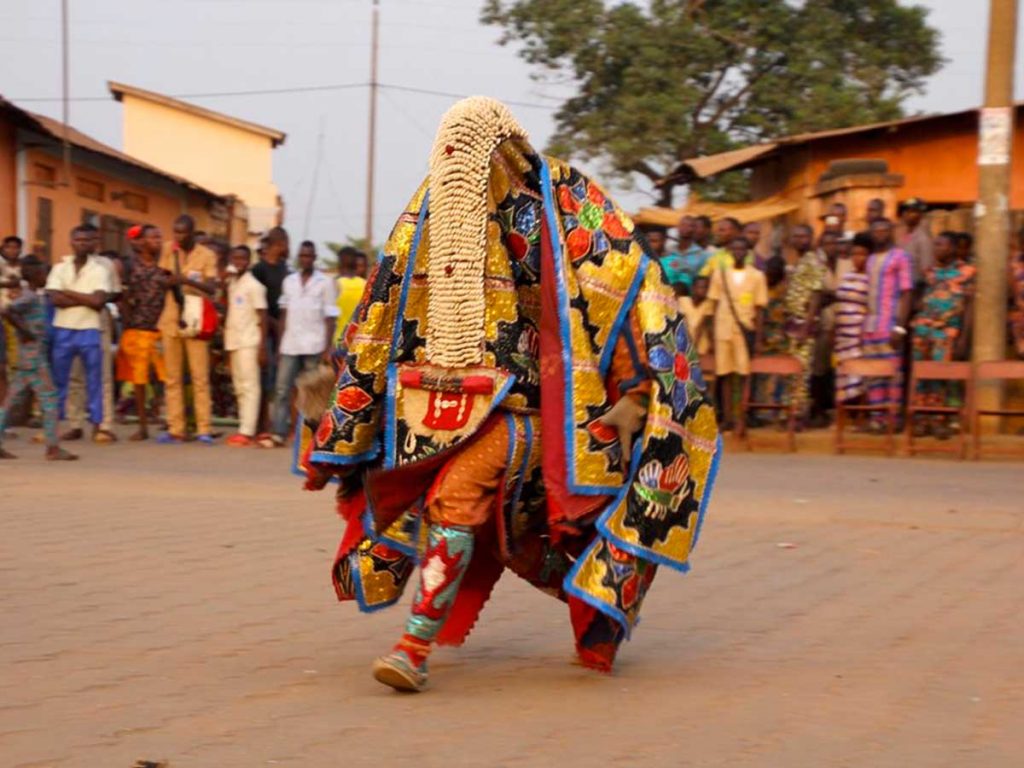In traditional practice, Egungun (the ancestors) play a very important role. It is the Orisa symbol of tradition, since tradition is created over time by our ancestors.
Who is Egungun?
Egungun is an Orisa. It represents our ancestors and through it we pay tribute and propitiate all our deceased relatives. All of our deceased relatives are part of our extended ancestral family.

How to get initiated in Egungun
There are different types of Egungun and even different initiations of this Orisa. The first is the initiation of the Isan Egungun, which is a kind of messenger of the Orisa who possesses the spiritual whip of Egungun. Later, to become a priest of the ancestors, one must complete the initiation called Is pa Atesebo, which consists of receiving the Egungun Masquerade (Ará orun Kìn in kin or the inhabitants of the sky) which contains their traditional clothing of various colors called Aso Ìyámojè. . Usually the representative of the family is the one who has this initiation. It is worth noting that it is important that all people who practice Traditional Ifá have, at least, the first initiation since we all, without exception, have ancestors that we must foster. An example of how to propitiate the ancestors is available in Ifá Tradicional Pro.
How to feed Egungun
This Orisa must be propitiated in an intelligent way so as not to make our ancestors angry.
Materials for the offerings
The ancestors should be propitiated mainly with typical food that our relatives ate in life, unless an Ifa verse is used for the propitiation in which some specific material should be used.
Some taboos
The taboos are mainly foods that our ancestors do not like and black oil. Obatala worshipers cannot be initiated into Masquerade Egungun and women must not enter the Egungun altar.

Types of Egungun in traditional practice
As we mentioned before, there is only one Egúngún. However, there are different types of representation of the Orisa that are focused on something specific. Among the most recognized are Egúngún Kúndúke or Egúngún Alágbe, which is recognized for its majestic dances; Egúngún Elérù, Egúngún Olópón, Egúngún Gèlèdé among others.
